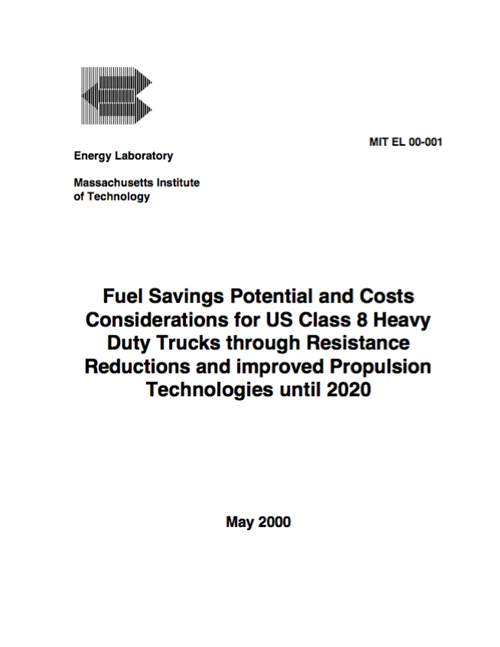This study explores the different possibilities for fuel savings in US class 8 heavy-duty trucks (GVW1 > 33,000lbs). Better fuel economy resulting from reduced driving resistances and diesel hybrid technology are compared. Important differences from passenger cars are explained. Fuel cell technology is described. Other factors such as improvements of driver skills are discussed.
On the basis of a Matlab-Simulink program issued by L. Guzzella and A. Amstutz of ETHZ [6], possible fuel savings through aerodynamic drag and rolling resistance reduction for diesel trucks as well as diesel hybrids are compared and put into relation with the corresponding increased investment costs. Two driving cycles are used for comparison a highway and an urban cycle adapted to the slower accelerating heavy vehicles. Compared to a baseline truck with a Cd-value of 0.62 and a rolling resistance coefficient (RRC) of 0.007 fuel consumption savings of up to 25% seem possible merely by reduced driving resistances (Cd-value = 0.4, RRC = 0.005). Improved engine efficiency and introduction of hybrid technology in combination with resistance reduction measures could increase fuel economy up to 38% in highway driving and up to 50% in urban driving.
Fuel consumption reduction measures are put into relation to their costs, and modeling results show that driving resistance reduction measures are particularly interesting for long haul steady speed operations, whereas hybrid technology is more effective in urban frequent stop delivery use.
